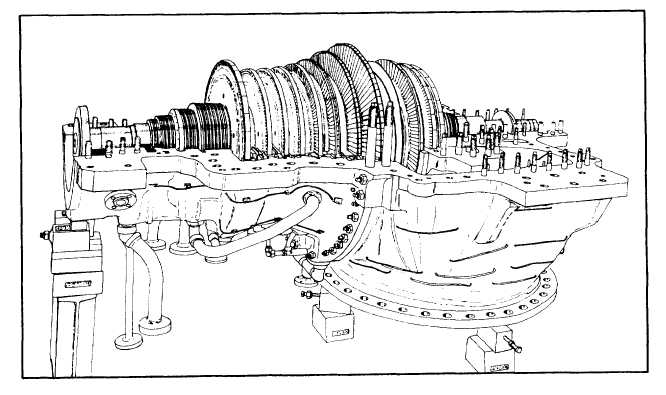work. Turbines may be further classified according
to the following:
Foundations
. Type and arrangement of staging
. Direction of steam flow
. Repetition of steam flow
. Division of steam flow
A turbine may also be classified by whether
it is a condensing unit (exhaust to a condenser at
a pressure below atmospheric pressure) or a non-
condensing unit (exhausts to another system such
as the auxiliary exhaust steam system at a pressure
above atmospheric pressure).
CONSTRUCTION OF TURBINES
Other than the operating and controlling
equipment, similarity exists in both the impulse
and reaction turbines. These include foundations,
casings, nozzles, rotors, bearings, and shaft
glands.
Turbine foundations are built up from a
structural foundation in the hull to provide a rigid
supporting base. All turbines are subjected to
varying degrees of temperature—from that
existing during a secured condition to that existing
during full-power operation. Therefore, means are
provided to allow for expansion and contraction.
At the forward end of the turbine, there are
various ways to give freedom of movement.
Elongated bolt holes or grooved sliding seats are
used so that the forward end of the turbine can
move fore and aft as either expansion or
contraction takes place. The forward end of the
turbine may also be mounted with a flexible
I-beam that will flex either fore or aft.
Casings
The materials used to construct turbines will
vary somewhat depending on the steam and power
conditions for which the turbine is designed.
Turbine casings are made of cast carbon steel for
nonsuperheated steam applications. Superheated
Figure 5-7.—Turbine assembly in a machine shop.
5-5


